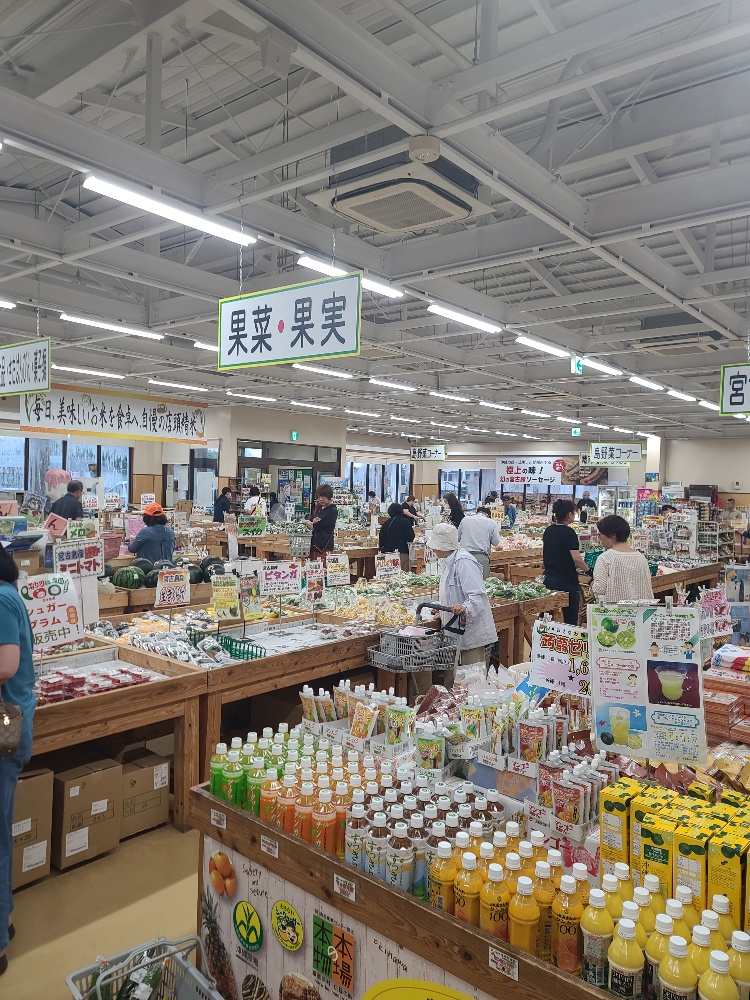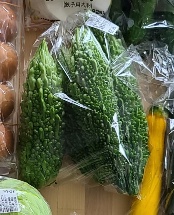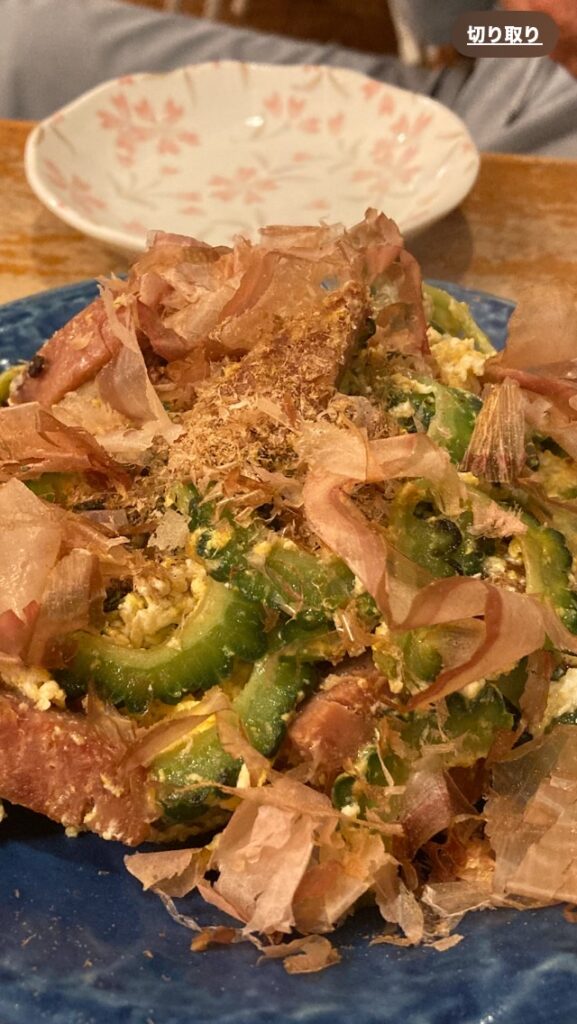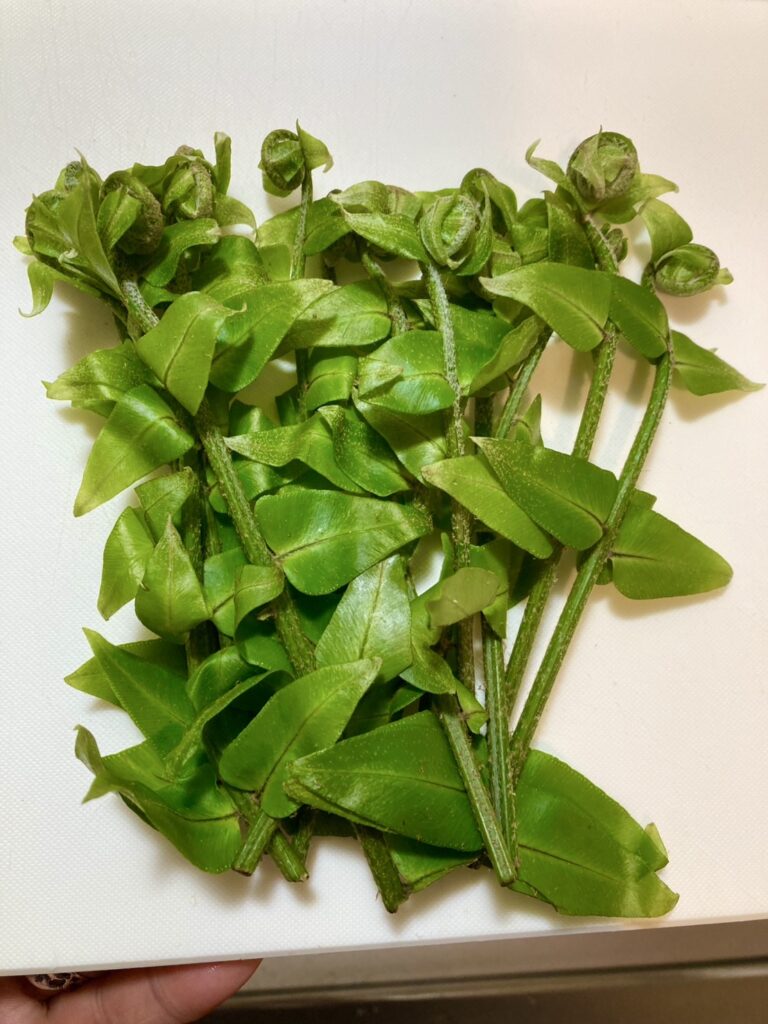One of my favorite places throughout Japan, to explore and to learn more about a region’s foods are the local JA (Japanese Agriculture) stores. These stores, found all over Japan, are a reliable source of fresh, locally grown vegetables at reasonable prices. Whenever I travel or work in a new area, I always make a point to stop by a JA store or a roadside station known as “michi-no-eki.” There, I pick up seasonal vegetables that reflect the time of year and the local flavor. One of the joys of visiting these places is discovering rare or unfamiliar produce that you would never see in Tokyo. Miyako Island’s JA store offered a delightful mix of common vegetables and unfamiliar ones that piqued my curiosity.

Goya, also known as bitter melon, is a staple of Okinawan cuisine. Miyako Island is located in the Okinawa Prefecture in southern Japan. These islands are located hundreds of miles across open sea, south of the main Japanese islands. The iconic dish made with this vegetable is “goya champuru,” a stir-fry combining goya with tofu, egg, cabbage, and Spam. Goya is widely eaten in many parts of Asia, but rarely seen in western countries. True to its name, bitter melon has a distinct bitterness that not everyone enjoys. Still, it’s incredibly nutritious and said to boost stamina, making it perfect for the hot Okinawan climate. It has even become more common in Tokyo in recent years, showing up in supermarkets and home gardens.
As mentioned, “Goya Champuru” includes vegetables like cabbage, firm tofu, egg, and spam. The slightly bitter goya, when stir-fried together with these ingredients, creates a satisfying balance of textures and flavors. The richness of the spam and the softness of the egg unify the dish beautifully—it’s both hearty and flavorful.


What’s that fluffy stuff on top of Goya champuru?
It’s called katsuobushi—dried bonito flakes. These thin, papery flakes are made from fermented, smoked bonito and are a cornerstone of Japanese cuisine. Katsuobushi is used to make dashi (soup stock), and is also sprinkled over vegetables or tofu for its smoky aroma and umami-rich flavor. It dances lightly from the heat of the dish when served, making it a charming and flavorful topping.
Choosing to eat a bitter vegetable like goya might seem unusual, but it’s quite telling of Japanese culinary values. Just like in the previous blog post about spring mountain vegetables (sansai), the enjoyment of bitterness is part of our food culture—it’s tied to health, tradition, and the seasons. Goya is a true superfood, and I highly recommend trying it if you get the chance.
Miyako Island Zenmai (Osmunda Fern Shoots)

In Japan, the young shoots of ferns are called “sansai” (mountain vegetables) and are considered a seasonal delicacy in spring. On this trip to Miyako Island, I discovered a local variety of zenmai (fiddlehead fern) that I’d never seen before. This unique type is available for just a few weeks and can only be found on the island.
Unlike the common zenmai found in mainland Japan, which requires a lengthy process of boiling and soaking to remove bitterness, the Miyako Island variety can be enjoyed simply by boiling. For my first try, I ate it with just a splash of soy sauce. For the second plate, I added some mayonnaise. Its fresh, clean flavor and smooth texture made it easy to eat—it felt like I could keep eating it endlessly! I imagine it would also be delicious in sesame dressing or added to soups.

Even with the modern abundance of food choices, there’s something special about eating wild plants like these. I believe our taste buds naturally crave the seasonal flavors. Japanese cuisine places deep value on seasonality, and tasting these flavors—bitter, earthy, fresh—is part of staying connected to nature and tradition.
What’s the most unusual vegetable you’ve ever eaten while traveling? I’d love to hear about your experiences too.
In the next post, I’ll introduce more of Miyako Island’s unique vegetables—pardama, puchipuyo, and green papaya. Taste of Miyako Island: Fresh Vegetables – Part 2 coming soon!
Miki Honda: A traveler and author from Tokyo, Japan, holds certifications as a Natural Food Coordinator and as an Organic Consultant. Easy cooking with what you get locally while traveling. ”Cooking is not only for your body but also your heart and eyes” !